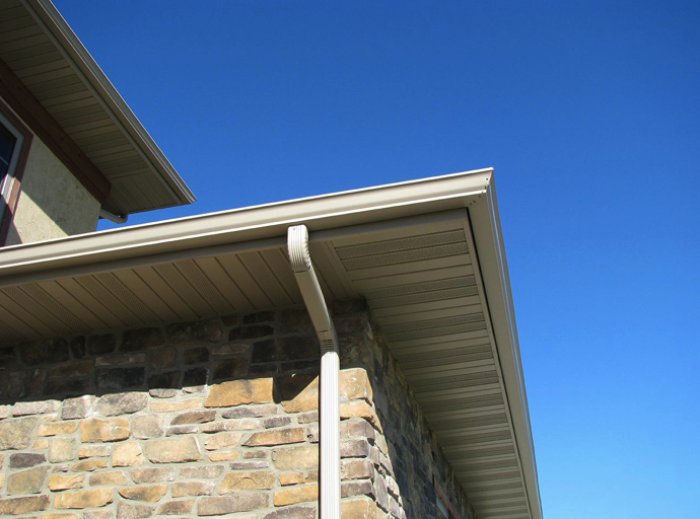THANKSGIVING DECOR FOR A FESTIVE OUTDOOR DESIGN
Transform your home’s exterior this Thanksgiving with warm colors, rustic textures, and cozy lighting. Explore outdoor decor ideas to create a festive, welcoming space for family and friends.
READ MOREJust as spring is a good time to clean out all the junk and clutter you’ve accumulated over the past year, fall is a good time to inspect your home for any needed updates or repairs.
Contractors often get busy during this time of year, so it’s never too early to make sure your home is prepped to protect you and your family from the cold and chill.
Some home improvement jobs are obvious. If you spend a few Saturdays raking leaves, for example, that serves as a good reminder to have your gutters cleaned.
But just because a problem isn’t glaringly obvious doesn’t mean it’s not important. Soffits are a good example.

Soffits are the planks that connect the underside of your roof overhang to the walls of your house. Without soffits, those unsightly bare beams of the roof would be visible.
Aside from the aesthetic value of camouflaging the roof’s structure, soffits provide tangible benefits that make a huge impact on both the comfort and value of your home.
Soffits protect your roof’s underlying structure from the elements. Without them, rain and snow would cause your roof to mold and rot.
Soffits also protect your roof from other natural elements, namely insects, birds, and other pests that might be looking for a warm, dry place during cooler months.
Your attic isn’t just a place to store stuff you can’t bring yourself to throw away. Along with soffits, your attic plays a primary role in your home’s ventilation by constantly recirculating heat and moisture. In addition to health and comfort, an attic with properly vented soffits can reduce your utility bill. You’ll want to make sure your soffits aren’t covered by any insulation in your attic, as this can prevent proper ventilation.
A well-ventilated attic offers several cost-saving benefits:
Due to the potential for damage, many shingle manufacturer warranties mandate that homes must have adequate attic ventilation, of which soffits are a main component. A lack of soffits could invalidate your roof’s warranty.
Aluminum soffits can also add to the value of your home. For one thing, they’re more aesthetically pleasing than the bare beams they conceal, and, since they’re available in a variety of colors and materials, they’re a great way to customize your home.
More importantly, soffits can reduce your monthly utility bill, which many home buyers check before making an offer.
Regular inspections and maintenance will help you spot problems before they become serious. Steps include:
If your home’s soffits are no longer providing proper protection and ventilation, or if your soffits are made of a high maintenance material like wood, it’s time to consider replacing them.
While a good contractor can walk you through the process, there are some things you may want to think about ahead of time so you don’t feel rushed.
Your first task will be to decide what type of soffit will be the best fit for you and your home and each type has its own pros and cons. Factors to consider include:

Aluminum soffits enjoy a great deal of popularity in the United States. Unlike wooden soffits, they’re practically maintenance-free and last for years. They’re also available in styles and colors to complement any home, from brick and stucco to vinyl siding and fiber cement.
In addition, companies like Rollex are dedicated to being responsible members of the community, reducing their carbon footprint by buying locally, using recycled materials, and recycling the waste water and oil produced in their manufacturing processes.
Once you’ve chosen your soffits, you’ll need to brush off your math skills to calculate how much ventilation your home needs. This is called the Net Free Air, or NFA. The rule of thumb is to have one square foot of vent space for every 150 square feet of attic space. If you like to keep things simple, just divide the area of the attic by 150. Those who prefer precise calculations can easily find detailed instructions online. (Your contractor will take measurements, too, but some homeowners like to verify their calculations.)
Making sure your soffits are in good shape and working as they’re supposed to is a critical step for any homeowner. When cooler, damper weather approaches, it’s a good time to inspect and, if needed, replace your soffits. Your personal comfort and the value of your home—not to mention your utility bills—will thank you for it.